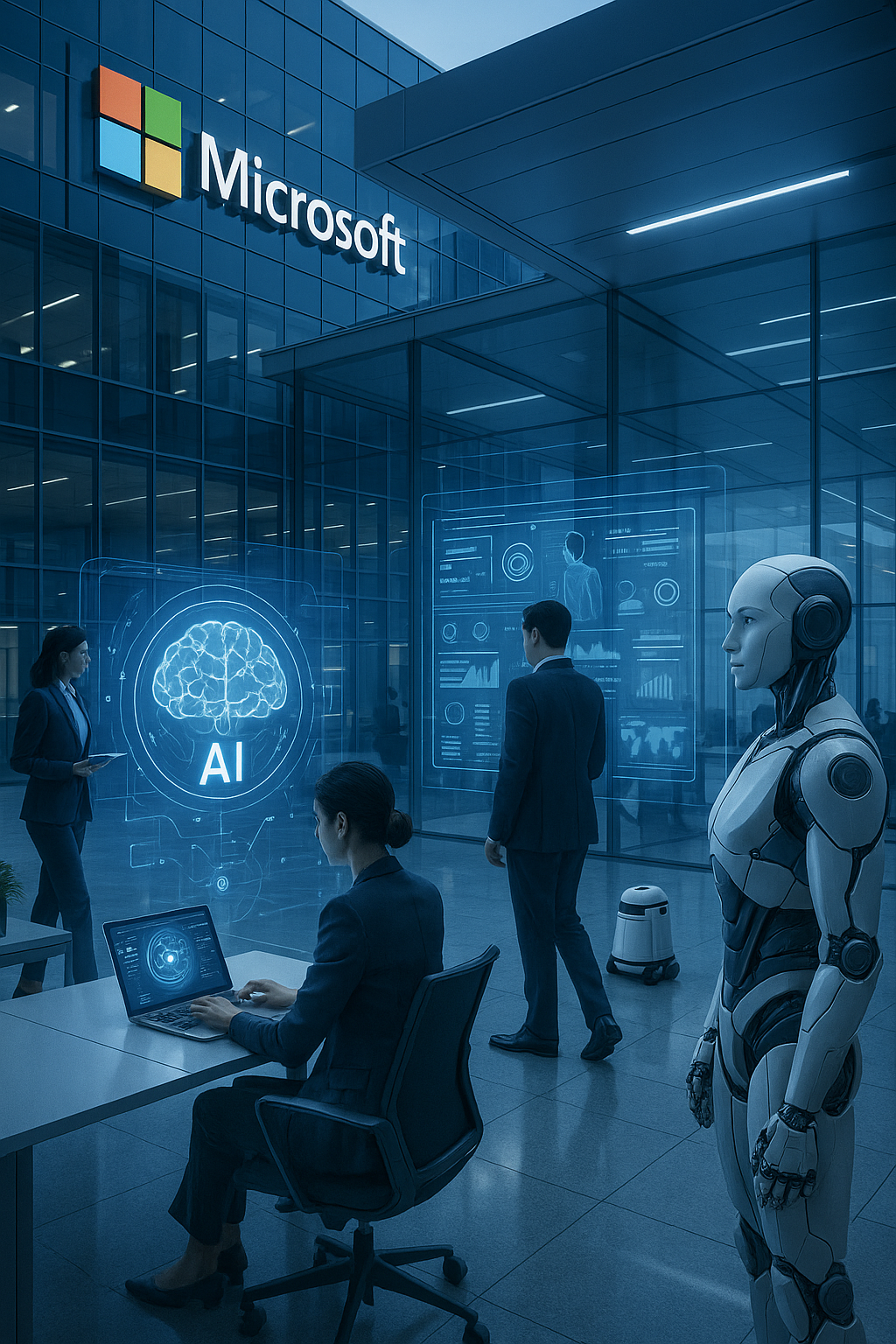In a significant strategic shift that underscores the transformative impact of artificial intelligence on the modern workforce, Microsoft announced on June 2, 2025, that it would eliminate approximately 6,000 positions—roughly 3% of its global workforce—as part of a comprehensive restructuring focused on AI-driven operations.
The decision, which affects employees across various divisions, represents one of the most substantial workforce reductions in Microsoft’s recent history and signals the company’s commitment to positioning itself at the forefront of the artificial intelligence revolution. CEO Satya Nadella emphasized that the layoffs were not performance-based but rather reflected the evolving nature of work in an AI-enhanced environment.

“This restructuring is about realigning our workforce with the future of technology,” Nadella explained during a company-wide meeting. “As AI capabilities advance, we must ensure our human capital is optimally positioned to work alongside these technologies rather than compete with them.”
The layoffs come as Microsoft continues to invest heavily in artificial intelligence technologies, including its partnership with OpenAI and the development of AI-powered tools like Copilot. The company has reported that AI now writes up to 30% of code on some projects, with projections suggesting this could reach 95% by 2030, according to Microsoft CTO Kevin Scott.
Industry analysts view this move as part of a broader trend affecting the technology sector, where companies are increasingly automating routine tasks and redefining job roles to focus on AI collaboration rather than traditional manual processes. The restructuring is expected to save Microsoft approximately $800 million annually while freeing up resources for continued AI research and development.
“Microsoft’s decision reflects the reality that AI is not just changing how we work—it’s fundamentally altering what work needs to be done by humans,” said Dr. Sarah Chen, a technology workforce analyst at the Future of Work Institute. “Companies that adapt quickly to this shift will have a competitive advantage, but the human cost cannot be ignored.”
The affected employees will receive comprehensive severance packages, including extended healthcare benefits, career transition support, and priority consideration for other positions within Microsoft. The company has also announced plans to retrain existing employees in AI-related skills through its internal learning platforms.
Microsoft’s stock price rose 2.3% following the announcement, as investors viewed the restructuring as a positive step toward operational efficiency and AI leadership. However, the move has also sparked discussions about the broader implications of AI adoption on employment across the technology industry.
The restructuring is expected to be completed by the end of 2025, with Microsoft planning to hire approximately 3,000 new employees in AI-focused roles over the same period. This net reduction of 3,000 positions represents the company’s commitment to building a more specialized, AI-centric workforce.
As artificial intelligence continues to reshape industries worldwide, Microsoft’s bold restructuring move may serve as a blueprint for other technology companies navigating the transition to an AI-driven future. The success of this strategy will likely influence how other major corporations approach workforce planning in the age of artificial intelligence.
